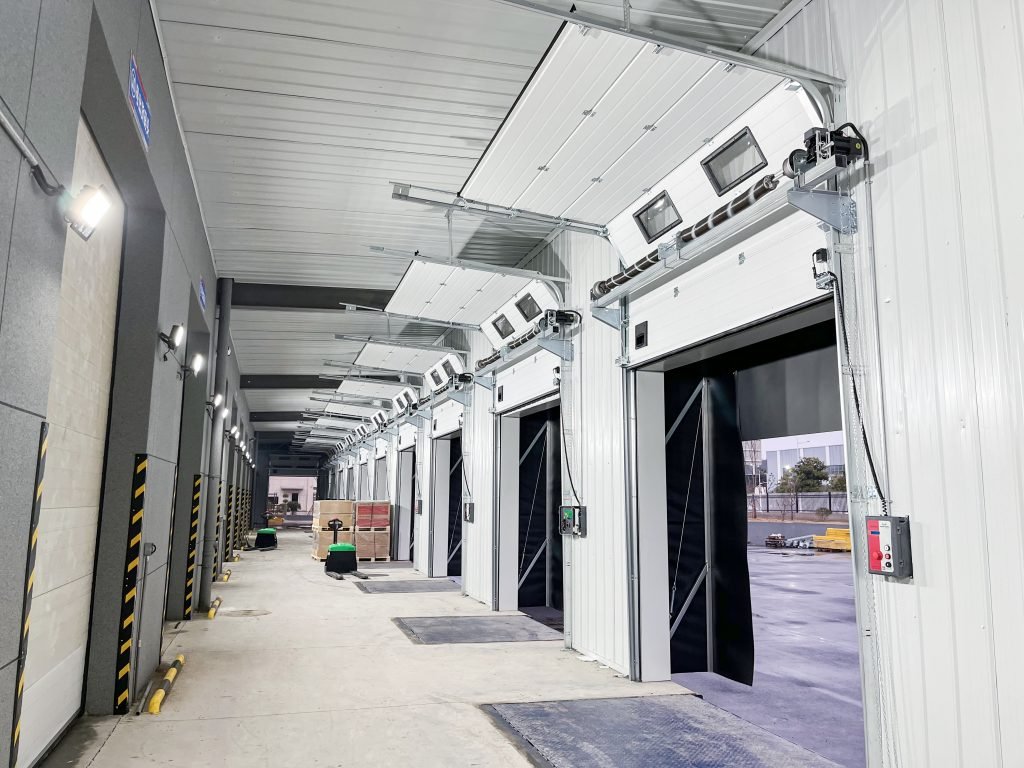
How to choose the correct lifting method for overhead sectional industrial doors?
Overhead sectional industrial doors have become a crucial component of modern factories, serving as efficient entrance and exit points. These doors offer a range of benefits, including rapid opening speeds, straightforward installation, and hassle-free maintenance. They have gained widespread adoption across various sectors, including factories, logistics centers, workshops, and manufacturing industries.

The distinction between two key lifting methods: turning lifting and vertical lifting
1. Turning Lifting: Maximizing Space Efficiency
One primary reason for opting for turning lifting is the limited space available above the door opening. This lifting method is designed to pivot along the wall, thereby making optimal use of the vertical space within the opening. It is the go-to choice when there is insufficient space above the door.
2. Vertical Lifting: Ideal for Spacious Environments
Vertical lifting, on the other hand, is employed for doors with ample top space or those that align with the door opening’s height. Turning lifting is developed to address the spatial constraints above the door opening. When the sectional door’s sliding space is restricted, the industrial door can pivot along the wall before moving parallel to the ceiling. This lifting method minimizes the horizontal space required, effectively utilizing the opening’s space without spatial limitations. Vertical sectional doors are particularly well-suited for large door openings and generous overhead clearance. They find applications in steel structure factories, industrial facilities, logistics warehouses, extensive storage facilities, fire brigade establishments, cold storage units, military installations, and more.

In summary, the choice between turning lifting and vertical lifting depends on specific space considerations. Sectional door manufacturers take these factors into account during the design and installation process to ensure that overhead sectional industrial doors seamlessly adapt to diverse building environments. For example, DHL Global Forwarding Co., Ltd. chose to install this door from SEPPES.



